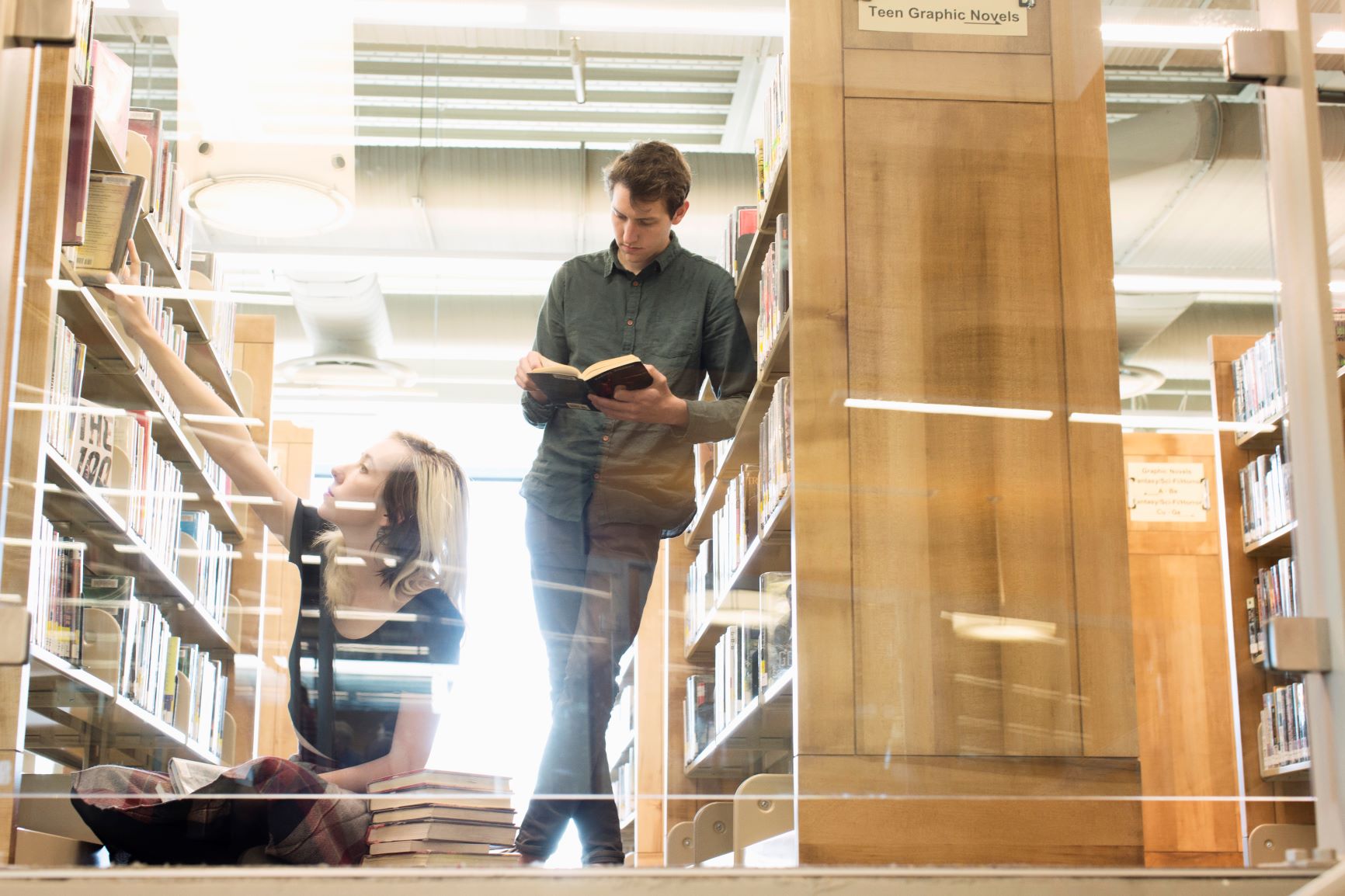Protecting our universities from fire protects our past and our future
Guaranteeing the safety of our educational facilities has always been a challenge. Today the size of our universities, the diverse nature of the buildings involved and the sheer number of people present only serve to increase the complexity of this challenge. Protection is vital, however, particularly from the danger presented by fire.
Fire protection is not only concerned with life safety and ensuring the uninterrupted daily routine of university life, it also includes the protection of the physical assets, such as the buildings themselves, the costly high-tech infrastructure, archived documents and manuscripts, etc. In the majority of cases, universities around the world are now self-funded and run along the lines of any other commercial organization. Student fees and research grants (from government agencies, industry and private foundations) are a vital source of income, without which many universities would struggle to be viable. The direct costs alone of fire damage to lecture theaters, laboratories or entire buildings could be quite considerable. However, the consequential loss of income resulting from the inability to provide the required educational training or carry out the contracted research work could deal a severe blow to the university’s income. It would also have an inevitable impact on its reputation and its ability to recruit high caliber teaching and research personnel.
Early and reliable detection is vital
Personal safety is generally regulated by law, while the protection of material assets is mainly determined by the requirements stipulated by insurance companies. Although the importance of asset protection should not be underestimated, life safety must always be given the highest priority. In universities and colleges this means protecting the lives of thousands of students, staff, technicians, support workers and visitors on a daily basis. In most countries national and regional directives specify the required fire safety standards for all educational facilities. To meet these legal standards of safety and damage mitigation, a comprehensive fire protection system must be implemented. This system should ensure early and reliable fire detection, activate all necessary warning devices and fire safety control functions, and notify the local fire services.
Large, complex campuses present challenges
University campuses often consist of a large number of buildings which serve a wide range of functions. These not only include teaching facilities, administration offices and student accommodation, but also libraries, a variety of specialized laboratories and high-tech research facilities. While some of these may be located in close proximity to one another, on larger campuses they may be some considerable distance apart. The size and complexity of these facilities, together with the functional diversity and the fluctuating numbers of students and staff present at any one time, means there is no universal fire protection solution that fits all cases. The number of buildings, together with the diversity of size and usage, present a considerable challenge to the planning of an appropriate fire protection solution. Attention should, of course, be given to those critical areas where large numbers of students, staff or visitors are frequently present. Special attention should also be paid to those areas where deceptive phenomena (such as steam, vapors, dust, etc.) can be anticipated. Applications such as cleanrooms will require extremely sensitive early detection, which can be best provided by aspirating smoke detection systems. On the other hand, the diversity of uses of event venues or similar large halls will demand a high degree of flexibility. Being able to modify the response behavior of the fire detectors, in accordance with the anticipated level of deceptive phenomena, is an ideal way of ensuring this flexibility.
False alarms and thoughtless behaviour
The fire safety record of higher education facilities is generally quite good. One area that is always a concern, however, is student accommodation, where a high incidence of false alarms and minor incidents result in numerous unnecessary evacuations and fire brigade call-outs. The cause can frequently be attributed to inappropriate behavior of the residents and their friends (e.g. leaving cooking unattended, the use of candles or smoking materials etc.). Such incidents are a
Fire Protection Universities_EN_final.doc
costly and frustrating waste of fire service resources. More importantly, frequent unnecessary evacuations can breed complacency among some residents, which may easily result in a genuine alarm being ignored. State-of-the-art products, together with the relevant technical know-how, can now practically eliminate false alarms caused by deceptive phenomena, such as steam, cooking vapors etc. Correctly positioned multi-criteria detectors with the appropriate parameter settings for the anticipated deceptive phenomena are essential pre-requisites in achieving this goal. Good organization and management are also an important factor in preventing incidents resulting from thoughtless behavior. When students first take up residence, it is essential that they are instructed in good fire safety practice, which should be reinforced by regular follow-up training. The strict enforcement of fire safety regulations covering smoking bans, the use of candles and the misuse of electrical equipment is particularly relevant in student accommodation where careless, ill-advised behavior can put property and lives at risk. The virtual elimination of false alarms quickly restores people’s confidence in the fire detection and alarming system. On hearing an alarm – because it is no longer a common occurrence – residents will react quickly and appropriately, rather than assuming it is simply another case of an unnecessary evacuation.
Early detection and prompt extinguishing
It is essential that any incipient fire is detected at the earliest possible stage. A rapid response can then minimize the danger of fire spreading and causing personal injury or damage to property. All colleges and universities must be fitted with standard firefighting equipment such as hoses and the appropriate types of fire extinguisher, to help those on the spot tackle any incipient fire. Such equipment must be easily visible, readily accessible and installed in adequate numbers throughout each building. In many countries new high-rise university buildings are also legally required to be fitted with sprinkler systems. Of course, regular maintenance and servicing of all extinguishing equipment is vital in ensuring that everything is in perfect working order whenever an emergency situation should arise.
Smoke control and evacuation
Smoke inhalation is widely known to represent a very real threat to anyone caught up in a building fire. Consequently all possible means must be employed to ensure that escape routes are kept free of smoke. Smoke extraction systems and pressurization fans fitted in corridors, stairwells and even underground car parks will prevent the build-up of noxious gases overwhelming those attempting to escape the danger area. In university and college buildings, smoke control should therefore be very much a part of the design process of any fire protection solution. Buildings should be compartmentalized by fire doors and fire-resisting walls and floors. Any customized smoke control system should restrict the build-up of heat and smoke, conducting both away through the installed vents and ducting. A smoke-free escape route, however, would be of little benefit if it is obstructed by items left or stored there by people assuming that an emergency situation would never occur. Ensuring that escape routes are always kept clear and uncluttered (or used for storage of any kind) is a fundamental part of good housekeeping. Staff and student training, together with regular fire drills, are also essential pre-requisites in being fully prepared for an emergency incident.
Advantages of today’s automatic fire protection solutions
Today’s automatic fire protection systems can provide early and reliable smoke detection, programmable alarming concepts to suit different site conditions and automatic notification of the local fire services. When a fire alarm is activated, the fire protection system can be programmed to activate location-specific control functions. The air conditioning system can be switched off and smoke dampers closed to prevent smoke from spreading throughout the building; pressurization fans can be activated to keep stairwells and escape routes free from smoke: vents can be opened to allow smoke to escape to the atmosphere: elevators can be commanded to travel to a predetermined floor (e.g. the ground floor) and remain there with the doors open. Of course, the programming of these control functions must be based on a detailed analysis of the building layout to ensure that the appropriate devices are activated, in accordance with the location of the fire. The installation of a state-of-the-art fire protection system can benefit all universities, irrespective of whether they are traditional institutions with buildings of historical importance or modern high-tech facilities. Such a system will ensure regulatory compliance with all relevant legal, technical and safety standards. It will also significantly reduce the risk of costly fire-incident related disruptions to the teaching timetables and to the operation of the research facilities. By virtually eliminating the possibility of false alarms caused by deceptive phenomena, modern automatic technology restores people’s confidence in fire detection and alarm systems.
Comprehensive solutions based on open communication protocols
In recent years the vulnerability of students and staff has been cruelly highlighted by a number of malicious attacks on university and college campuses. The integration of fire and security systems (e.g. video surveillance, intruder alarms, access control etc.) into a common management system can go a long way towards providing the improved security demanded. This integration process has been made considerably more efficient by the use of open communication protocols, which also enable the monitoring and control of building automation systems (e.g. lighting, HVAC, elevators etc.) from the same management station. All systems can therefore be managed in a highly efficient manner from one central on-site location or even remotely from any convenient off-site location.
Effective mass notification in the event of either a fire or an attack on the campus can be provided via video displays in lecture theaters, communal areas and other strategic points. Alerts can also be transmitted automatically to the personal devices (smart phones, tablets, etc.) of students and staff.
Case Study No.1
Founded in 2007 and currently boasting approximately 34,000 students, Istanbul
Aydin University (IAU) in central Istanbul, Turkey, recently decided to replace an
existing fire protection system with a Cerberus Pro system from Siemens. The privately-owned university wanted a system that could be quickly installed and commissioned to eliminate the false alarms of the incumbent system. The requirement was for a flexible, reliable system that could centrally monitor a site of ten faculties comprising laboratories, auditoriums and a large technology center. As a pilot project, the system in the main building was completed within only ten weeks, with the remaining campus areas following soon after. Each building was served by a single control panel: a total of 1500 standard and advanced fire detectors were installed in accordance with the particular requirements of the various areas. Mustafa Aydin, Board of Trustees Chairman at IAU, said: "We are currently constructing additional buildings on our campus. Since we are very satisfied with the performance of the system, the new buildings will also be equipped with Cerberus Pro from Siemens."
Case Study No.2
The King Khalid University, which is spread over several towns in the Asir Province of south-west Saudi Arabia, is one of the largest learning centers in the Middle East. The client was looking for a highly reliable fire protection solution from a single source. The challenging project consisted of numerous lecture theaters, laboratories, a library, car park, cafeteria and many other areas, all with differing firesafety requirements. Furthermore, the fire protection solution was to be integrated with other security systems into a third-party building management system. Along with the installation of 38 control panels in the widely distributed buildings, the project included 29,000 fire detectors and 2,000 addressable sounders. For the auditorium and library, linear beam detectors were used, while flame detectors were installed in the electrical/battery rooms. Amer Ali Aseery, Project Manager at the King Khalid University, is very happy with the installation saying: "We have chosen Siemens because we can rely on excellent quality. We also appreciate the local support and service."
For further information on the Building Technologies Division, please see www.siemens.com/buildingtechnologies
For further information on fire protection in universities, please see siemens.com/firesafety-universities



